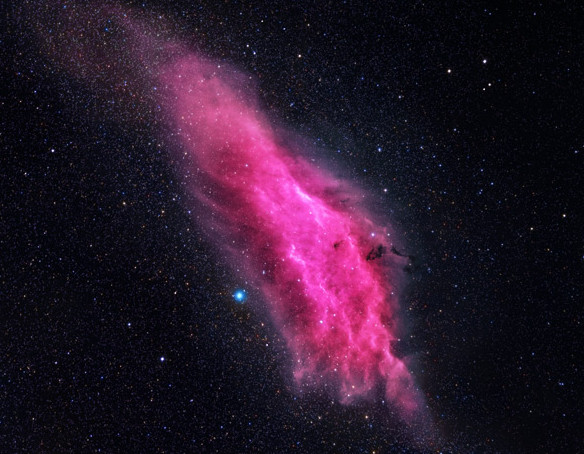

Because of the resemblance it bears to the state of California (in the United States), this pretty pink nebula is often called the California Nebula (more formally known as NGC 1499), and it can be found approximately 1,500 light-years from Earth, toward the constellation of Perseus (in the Orion Arm of our galaxy).
The physical, resemblance is basically the only thing the two have in common though. For starters, the state of California contains 163,696 mi² (423,970 km²) of land, while the California nebula is well over 100 light-years across (one light year is roughly equivalent to 5,878,000,000,000 miles, or 9,461,000,000,000 kilometers, so multiply that by 100 and you’ll begin to understand just how large this nebula happens to be). California is composed of dirt, rock and pollution, whilst the California Nebula is made of ionized hydrogen gas; California is known to harbor many stars, while the California nebula was forged by real ones.
By definition, this cloud is counted among the ranks of emission nebulae (they form as a result of star formation). As hot young stars come to fruition, they energetically release large quantities of ultraviolet radiation, which shape and sculpt gas and dust, whilst ionizing the gas, and making it glow. One particular high-mass star may be the driving force behind the California Nebula. Called Xi Persei, it hangs out on the outer edge of the nebula.
See a larger image here.